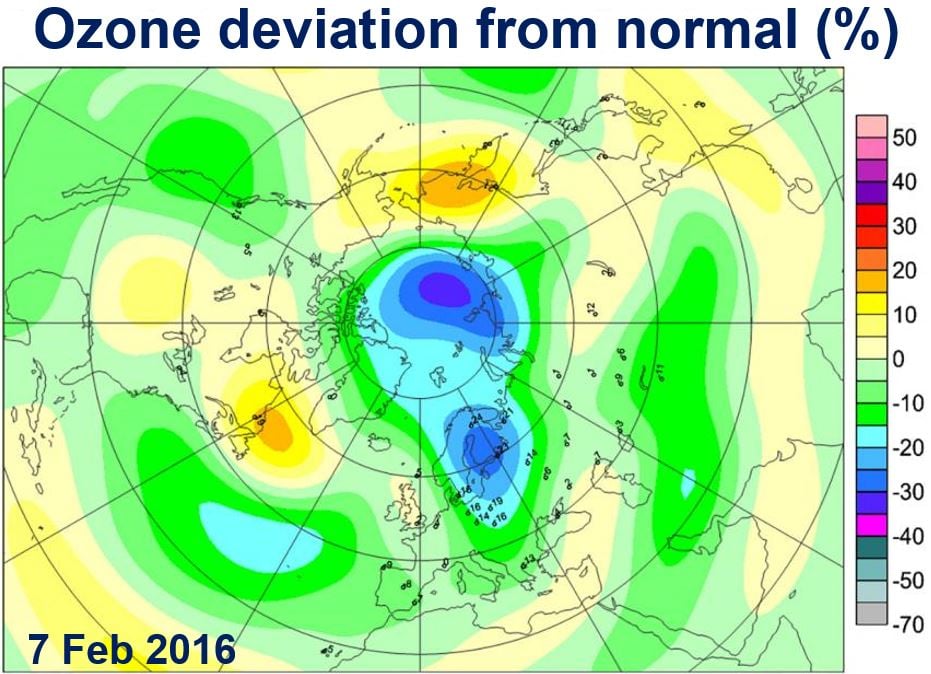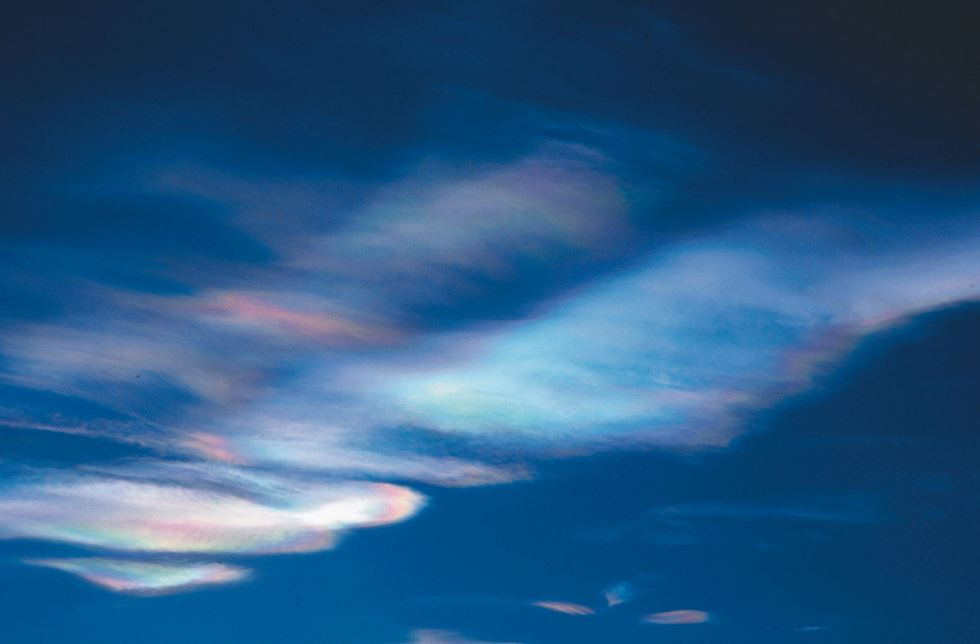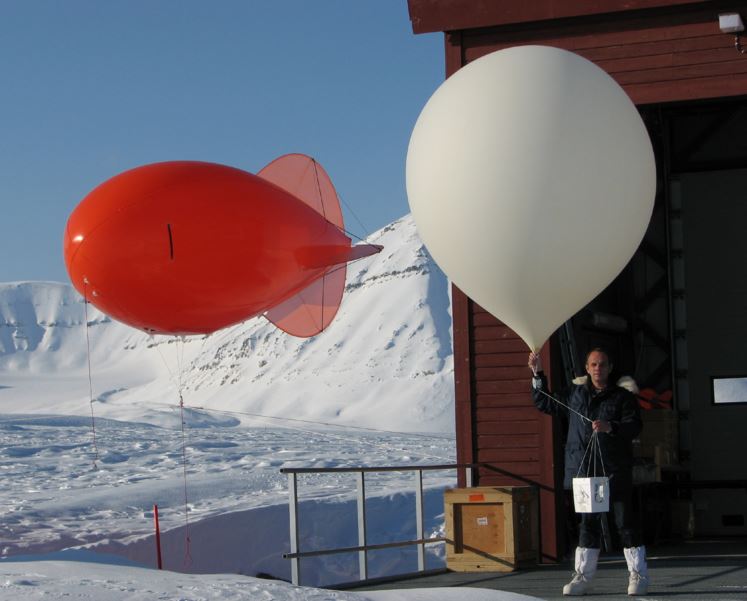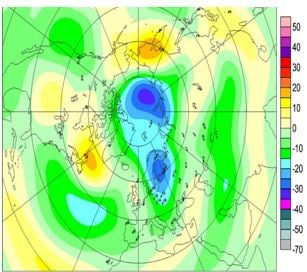An abnormally deep ozone hole may open up this spring over the Arctic and drift into central Europe, following an extremely cold spell in the region’s stratosphere over the past few weeks, which has created conditions that could cause severe ozone depletion in March.
Unless significant warming is seen between now and March, there will be a giant ozone hole in the Arctic atmosphere next month, say scientists from the Alfred Wegener Institute (AWI), Helmholtz Centre for Polar and Marine Research in Germany.
Eric Hand, a staff writer who covers Earth and planetary science in the journal Science, wrote about this study and its findings (citation below).
 Low temperatures and a strong stratospheric vortex have allowed a deep Arctic ozone hole to appear. (Image: sciencemag.org)
Low temperatures and a strong stratospheric vortex have allowed a deep Arctic ozone hole to appear. (Image: sciencemag.org)
Dr Marion Maturilli, an AWI atmospheric researcher, said:
“At about 20 kilometres altitude over the Arctic, the air has been as cold as minus 90 degrees Celsius for weeks.”
“Since the beginning of December, above our Arctic research station on Spitzbergen, the mean temperature in the stratosphere has been eight degrees Celsius below the long-term average and two degrees Celsius below the previous minimum. These are conditions that can result in substantial ozone depletion.”
Ozone depletion caused by chlorofluorocarbons
The depletion of the ozone layer is the result of large quantities of chlorofluorocarbons (CFCs) released into the atmosphere by us over the past decades. CFCs breakdown products attack the ozone layer, especially following extended periods of severely cold weather conditions.
Such cold spells typically only occur in the Antarctic winter, hence an ozone hole generally forms in that part of the world annually in spring.
Dr. Markus Rex, an AMI scientist who is also coordinator of the EU-funded project StratoClim, which closely monitors the situation in the Arctic, said:
”In the Arctic, on the other hand, the temperatures in the stratosphere are usually higher and much more variable, which means that ozone depletion is limited.”
 A Polar Stratospheric Cloud, which is sometimes called a ‘mother of pearl cloud’. This type of clouds triggers the ozone-loss process. (Image: awi.de)
A Polar Stratospheric Cloud, which is sometimes called a ‘mother of pearl cloud’. This type of clouds triggers the ozone-loss process. (Image: awi.de)
“Here, severe ozone losses only occur following periods of particularly low temperatures, which we have experienced only very rarely – for example after the cold stratospheric winter of 2010/2011. At that time, ozone depletion also led to a pronounced minimum over the northern hemisphere.”
Stable low-pressure vortex to blame
According to model calculations carried out by AWI scientists, based on the abnormally cold spell of recent weeks, the chemical conditions in the stratosphere in the Arctic have already exceeded the ozone depletion potential of the 2010/2011 winter.
Dr. Rex said:
“The air masses with these unusual conditions are currently caught in a low-pressure vortex high over the Arctic. Transport of ozone into the vortex has also been low and an ozone minimum has already started to develop.”
“By mid-February more than a quarter of the total ozone above the Arctic will have been destroyed chemically. At that time ozone depletion within the vortex will gain momentum when more intense solar light returns to the Arctic at the end of the polar night.”
“Should the vortex persist until well into March, the formation of a deep ozone minimum over the Arctic has to be expected. However, if the vortex breaks up before then, the air masses will sufficiently mix with fresh air from lower latitudes and the Arctic will narrowly avoid a new record of ozone depletion.”
The scientific team says it is not currently possible to reliably forecast what will happen to the vortex after late February, and whether it will break up in time.
 Jürgen Graeser about to launch an ozone monitoring weather balloon at the AWIPEV research base in Ny-Alesund. In the background (orange) is a tethered balloon. (Image: awi.de)
Jürgen Graeser about to launch an ozone monitoring weather balloon at the AWIPEV research base in Ny-Alesund. In the background (orange) is a tethered balloon. (Image: awi.de)
Big ozone hole could drift to Europe
If a sizeable ozone minimum does develop, there is a good chance it could drift over Central Europe.
In order to closely monitor the ozone loss over the Arctic, the StratoClim collaborators, alongside other research centers across the world, are sending hundreds of ozone sensors into the stratosphere. The aim is to have a network of thirty observation stations.
The researchers say that they plan fly high-altitude research aircraft into the Arctic stratosphere early in April.
Stratosphere cooling caused by climate change
Dr. Rex said:
“We are expecting a general cooling of the stratosphere as a result of global climate change. The mechanisms that regulate the temperatures of the Arctic stratosphere, however, are complicated and not fully understood.”
“Whether the record low temperatures in the past weeks are linked to climate change is therefore the subject of active research.”
The Montreal Protocol bans the production of ozone-depleting CFCs worldwide. The ozone layer is therefore eventually expected to make a full recovery. This will take a while, however – with scientists predicting the recovery won’t be complete until the end of this century.
Dr. Rex said:
“The current unusual situation in the Arctic does not change this positive outlook, even if a record ozone loss over the Arctic should occur this spring.”
These promising results probably make the Montreal Protocol the most effective international treaty in the history of global environmental protection.
Regarding the CFCs already in the atmosphere, Dr. Rex said:
“Unfortunately, the CFCs already released cannot be removed from the atmosphere and their natural breakdown in the atmosphere is very slow. During the next one to two decades, following unusual cold spells, the Arctic stratosphere will therefore remain susceptible to severe ozone losses.”
Ozone in the stratosphere protects us from the Sun’s harmful UV radiation. However, at ground level, when levels are high, it is bad for human health.
Citation: “Record ozone hole may open over Arctic in the spring,” Eric Hand. Science. 10th February, 2016. DOI: 10.1126/science.aaf4033.

